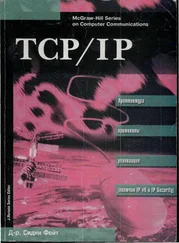The latest innovation is Mirai, a family of botnets that exploit IoT devices. The first Mirai worm infected CCTV cameras that had been manufactured by Xiaomi and that had a known factory default password that couldn't be changed. Mirai botnets scan the Internet's IPv4 address space for other vulnerable devices which typically get infected within minutes of being powered up. The first major attack was on DynDNS and took down Twitter for six hours on the US eastern seaboard in October 2016. Since then there have been over a thousand variants, which researchers study to determine what's changed and to work out what countermeasures might be used.
At any one time, there may be half a dozen large botnet herders. The Mirai operators, for example, seem to be two or three groups that might have involved a few dozen people.
In addition to the several hundred software engineers who write malware for the world's intelligence agencies and their contractors, there may be hundreds of people writing malware for the criminal market; nobody really knows (though we can monitor traffic on hacker forums to guess the order of magnitude).
Within this community there are specialists. Some concentrate on turning vulnerabilities into exploits, a nontrivial task for modern operating systems that use stack canaries, ASLR and other techniques we'll discuss later in section 6.4.1. Others specialise in the remote access Trojans that the exploits install; others build the peer-to-peer and DGA software for resilient command-and-control communications; yet others design specialised payloads for bank fraud. The highest-value operations seem to be platforms that are maintained with constant upgrades to cope with the latest countermeasures from the anti-virus companies. Within each specialist market segment there are typically a handful of operators, so that when we arrest one of them it makes a difference for a while. Some of the providers are based in jurisdictions that don't extradite their nationals, like Russia, and Russian crimeware is used not just by Russian state actors but by others too.
As Android has taken over from Windows as the most frequently used operating system we've seen a rise in Android malware. In China and in countries with a lot of second-hand and older phones, this may be software that uses an unpatched vulnerability to root an Android phone; the USA and Europe have lots of unpatched phones (as many OEMs stop offering patches once a phone is no longer on sale) but it's often just apps that do bad things, such as stealing SMSes used to authenticate banking transactions.
Spamming arrived on a small scale when the Internet opened to the public in the mid-1990s, and by 2000 we saw the Earthlink spammer making millions from sending phishing lures. By 2010 spam was costing the world's ISPs and tech companies about $1bn a year in countermeasures, but it earned its operators perhaps one percent of that. The main beneficiaries may have been webmail services such as Yahoo, Hotmail and Gmail, which can operate better spam filters because of scale; during the 2010s, hundreds of millions of people switched to using their services.
Spam is now a highly specialised business, as getting past modern spam filters requires a whole toolbox of constantly-changing tricks. If you want to use spam to install ransomware, you're better off paying an existing service than trying to learn it all from scratch. Some spam involves industrial-scale email compromise, which can be expensive for the victim; some $350m was knocked off the $4.8bn price at which Yahoo was sold to Verizon after a bulk compromise [772].
2.3.1.4 Bulk account compromise
Some botnets are constantly trying to break into email and other online accounts by trying to guess passwords and password recovery questions. A large email service provider might be recovering several tens of thousands of accounts every day. There are peaks, typically when hackers compromise millions of email addresses and passwords at one website and then try them out at all the others. In 2019, this credential stuffing still accounts for the largest number of attempted account compromises by volume [1885]. Compromised accounts are sold on to people who exploit them in various ways. Primary email accounts often have recovery information for other accounts, including bank accounts if the attacker is lucky. They can also be used for scams such as the stranded traveler, where the victim emails all their friends saying they've been robbed in some foreign city and asking for urgent financial help to pay the hotel bill. If all else fails, compromised email accounts can be used to send spam.
A variant on the theme is the pay-per-install service, which implants malware on phones or PCs to order and at scale. This can involve a range of phishing lures in a variety of contexts, from free porn sites that ask you to install a special viewer, to sports paraphernalia offers and news about topical events. It can also use more technical means such as drive-by downloads. Such services are often offered by botnets which need them to maintain their own numbers; they might charge third party customers $10-15 per thousand machines infected in the USA and Europe, and perhaps $3 for Asia.
2.3.1.5 Targeted attackers
We've seen the emergence of hack-for-hire operators who will try to compromise a specific target account for a fee, of typically $750 [1885]. They will investigate the target, make multiple spear-phishing attempts, try password recovery procedures, and see if they can break in through related accounts. This continues a tradition of private eyes who traditionally helped in divorce cases and also stalked celebrities on behalf of red-top newspapers – though with even fewer ethical constraints now that services can be purchased anonymously online. John Scott-Railton and colleagues exposed the workings of Dark Basin, a hack-for-hire company that had targeted critics of ExxonMobil, and also net neutrality advocates, and traced it to a company in India [1695].
In recent years, targeted attacks have also been used at scale against small business owners and the finance staff of larger firms in order to carry out various kinds of payment fraud, as I'll discuss below in 2.3.2.
Back in the twentieth century, people who stole credit card numbers would have to go to the trouble of shopping for goods and then selling them to get money out. Nowadays there are specialists who buy compromised bank credentials on underground markets and exploit them. The prices reveal where the real value lies in the criminal chain; a combination of credit card number and expiry date sells for under a dollar, and to get into the single dollars you need a CVV, the cardholder's name and address, and more.
Cashout techniques change every few years, as paths are discovered through the world's money-laundering controls, and the regulations get tweaked to block them. Some cashout firms organise armies of mules to whom they transfer some of the risk. Back in the mid-2000s, mules could be drug users who would go to stores and buy goods with stolen credit cards; then there was a period when unwitting mules were recruited by ads promising large earnings to ‘agents’ to represent foreign companies but who were used to remit stolen funds through their personal bank accounts. The laundrymen next used Russian banks in Latvia, to which Russian mules would turn up to withdraw cash. Then Liberty Reserve, an unlicensed digital currency based in Costa Rica, was all the rage until it was closed down and its founder arrested in 2013. Bitcoin took over for a while but its popularity with the cybercrime community tailed off as its price became more volatile, as the US Department of the Treasury started arm-twisting bitcoin exchanges into identifying their customers.
Читать дальше











